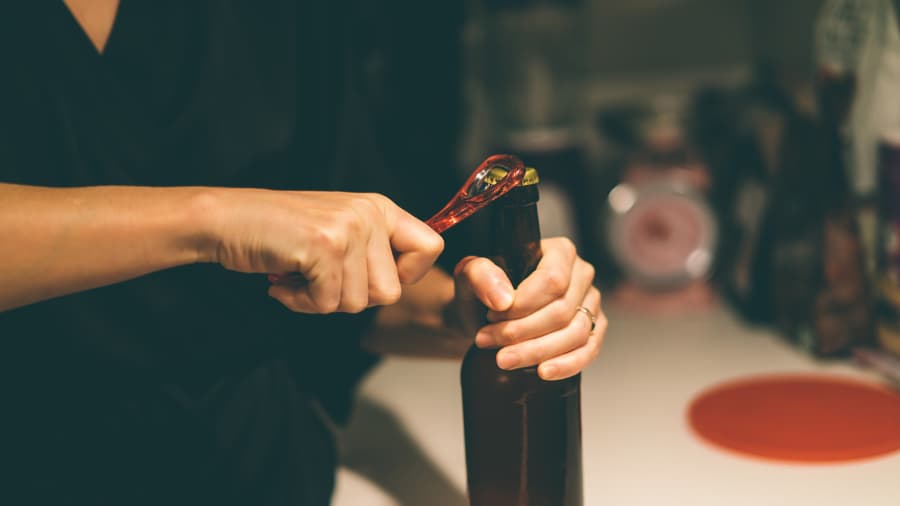
There’s nothing quite like a cold, refreshing brew. While many beers are meant to be enjoyed fresh from the store, some may taste better over time. But what’s the best way to age these alcoholic beverages? Here, Columbia Distributing discusses some of our best tips and insights into this process.
About Aging Beer
When selecting the right brew to age, there are several things to consider. The first is alcohol content. While there are some exceptions to the rule, beer with at least 8% alcohol by volume (ABV) typically ages well because alcohol acts as a preservative, creating a more resilient brew. If you’re worried about the stronger alcohol taste, keep in mind that this often mellows over time and allows the other flavors to flourish.
The next consideration is hops. This tip may seem counterintuitive, but the fewer hops the better, as the properties they provide usually fade over time. This means that the balance you’re expecting after the batch is done aging may not meet your discerning palate.
Lastly, take the amount of yeast into account. Thanks to yeast, the beer can eat up excess oxygen and mature slowly.
Which Beer to Age
There are several beers on the market ripe for aging in your own home. When perusing labels, look for these key selling points that indicate the beer improves with age:
- Barrel-aged
- Reserve
- Vertical
Another feature is Brettanomyces. This Belgian yeast is typically added at the end of the brewing process, and the beer will need a few months to mature. Also if the beer is “bottle-conditioned,” this means that it contains active yeast.
Some of the best styles from your favorite brands that are great for cellaring include:
- Baltic porter
- Belgian golden strong
- Berliner Weisse
- Old ale
- Russian imperial stout
- Scotch ale
- Sour
- Saison
Pick the Ideal Storage Environment
The aging process requires time and also the ideal temperature. This affects how your beer will taste. Perfectly balancing the two can help ensure you can achieve the ideal outcome for the particular brew at hand. Here are some things to keep in mind:
- Warmer temperatures speed up the aging process, and lower temperatures can cause a cloudy appearance.
- Agitation affects oxidation and age, so be sure to avoid movement.
- Store it in the dark to help prevent sunlight from making your batch skunky.
- Humidity should remain relatively consistent throughout the area. The ideal level is between 50% and 70%.
The ideal places to store aging beer could be a basement, closet, or another area of your home. And many people age their beer for six months to a year, depending on the brew. For instance, a stout may taste perfect after six months, while a sour may need more time.
Balancing Time and Temperature
The best part of the aging process is that the outcome is in your capable hands. It’s an art that can lead to different results with each batch, depending on how the cellaring environment is controlled. Cellaring decreases bitterness, harshness, and fruity or floral esters, while several features increase, such as:
- Ribes (black currant character)
- Bready and earthy character
- Fruit, tobacco, and vanilla flavors
- Meaty/brothy flavors
- Sherry-like aromas
- Sweetness
Generally, most beers should be stored between 50° and 55°F, but this can depend on the type of beer you have. Lighter beers (e.g., wheat, milds, and lagers) hold up well in the 45° to 50°F range, and stronger beers (e.g., tripels, barleywines, and dark ales) can handle 55° to 60°F.
Beer Organization
If you’ve ever seen a wine cellar, you may have noticed that the bottles are stored on their side. While this is great for wine, your beer bottles should stand upright. This helps ensure the yeast will settle to the bottom and minimizes the risk of oxidation.
The way you organize your stock is also important. Make sure to mark your beer, so you know when you purchased each batch. A simple way to do this is to sticker your bottlenecks or shelving. That way, you can pick out the ones that are ripe for drinking at a glance.
Explore Our Beverage Selection
Columbia Distributing delivers beer and other beverages to stores, restaurants, and event centers across the Pacific Northwest, and we’re always adding to our portfolio. To learn more about us and our services, contact us today.